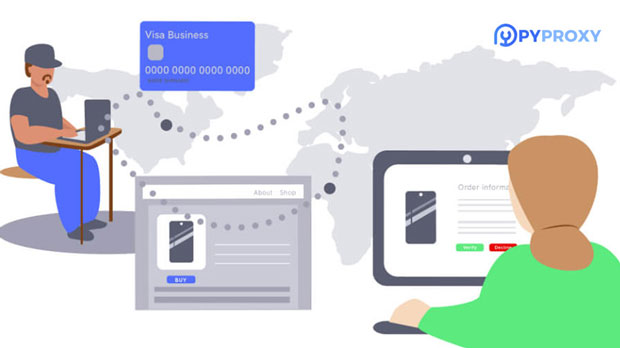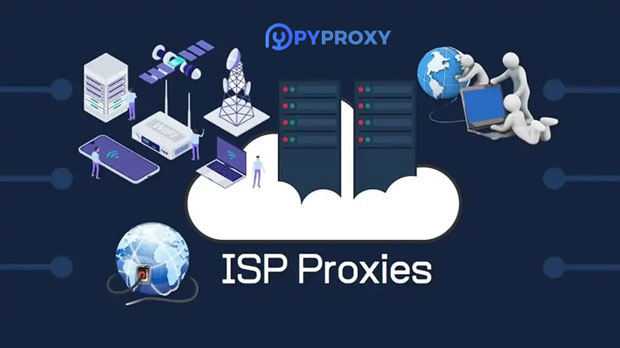How does proxy IP address latency affect my network experience?
When you use a proxy server, the latency of the proxy ip address can significantly impact your online experience. Latency refers to the delay between sending a request to a server and receiving a response. This delay can affect various aspects of your internet activities, including browsing speed, streaming quality, and online gaming performance. Understanding how latency works and the factors that influence it can help you optimize your internet usage, ensuring faster and more reliable access to websites and services. In this article, we will delve into the details of proxy latency, its effects, and how it can impact your network performance. What is Latency and How Does It Relate to proxy ips?Latency refers to the amount of time it takes for data to travel between two points on a network, typically measured in milliseconds (ms). In the context of a proxy server, latency refers to the time it takes for a request to be routed through the proxy before reaching its intended destination. This delay is influenced by various factors, including the distance between your device and the proxy server, the quality of the internet connection, and the processing time required by the proxy server itself.When using a proxy, the data you send or receive does not go directly to the intended destination. Instead, it first passes through the proxy server. This additional step adds latency, as data must travel farther and undergo more processing before reaching the final destination. The further the proxy server is from your location, the higher the latency you may experience.The Impact of Proxy Latency on Web BrowsingFor most users, the most noticeable effect of high proxy latency is slower web browsing. This delay can result in longer page load times, causing frustration when trying to access websites. In many cases, the time it takes for a webpage to fully load depends on the distance between the user and the proxy server. If the proxy is located far away from your geographic location, data has to travel a longer distance, leading to higher latency and slower load times.Moreover, proxy servers may introduce additional processing delays. This occurs when the proxy server must analyze and modify the incoming or outgoing data before passing it along. Depending on the type of proxy, it may perform actions like encrypting data for security or caching content to improve speed. These extra steps can further increase latency, causing even slower browsing speeds.Latency and Streaming QualityAnother area where proxy latency plays a crucial role is in streaming media. Whether you're watching a video or listening to music online, the quality of your streaming experience can be significantly affected by high proxy latency. In streaming, data needs to flow smoothly and quickly to maintain a consistent and high-quality experience. When latency is high, buffering becomes more frequent, and videos may pause to load or degrade in quality.For example, when streaming a video, if the proxy server is located far from your device, it takes longer for each data packet to travel between your device and the proxy. This delay can result in frequent interruptions, lower video resolution, or a delayed response time when you try to skip or pause the video. Latency is especially noticeable in live streaming or real-time video communication, where delays can disrupt the interaction and hinder the overall user experience.Impact of Proxy Latency on Online GamingFor online gamers, latency is a critical factor in determining the quality of the gaming experience. High proxy latency can lead to lag, delays in player actions, and disconnections from the game server. When you play a game online, your device sends real-time commands to a server, and it receives updates about the game world. If the proxy server introduces delays, it can affect the timing of these exchanges, resulting in lag that negatively impacts gameplay.In fast-paced online games, even a small increase in latency can be noticeable. Actions such as moving, shooting, or interacting with the environment may feel delayed, making the game less responsive and enjoyable. In competitive gaming, latency issues can significantly affect your performance and put you at a disadvantage compared to players with lower latency connections.Factors Affecting Proxy LatencySeveral factors can contribute to increased proxy latency, affecting your overall network experience. These factors include:1. Geographical Distance: The physical distance between your device and the proxy server is one of the primary determinants of latency. The farther the proxy is from your location, the higher the latency will be. This is especially important for activities like gaming or video streaming, where real-time communication is required.2. Network Congestion: High traffic volumes or congestion on the internet can lead to slower connections, increasing latency. When many users are accessing the proxy server or sharing the same network, it can lead to delays in data transmission.3. Proxy Server Load: The performance of the proxy server itself can also affect latency. If the server is overloaded with requests, it may struggle to process and forward data efficiently, leading to delays. A busy proxy server can cause longer wait times and slower data transmission, impacting your experience.4. Server Quality and Configuration: The quality of the proxy server hardware and software can play a significant role in determining latency. Servers with powerful processors and optimized configurations can process data more quickly, reducing latency. In contrast, poorly configured or underpowered servers can add significant delays.5. Encryption and Security Protocols: Some proxies use encryption or security protocols to protect user data. While these protocols improve security, they can also increase latency. Encrypting and decrypting data takes time, which can result in additional delays in the data transmission process.Minimizing Proxy Latency for Better Network PerformanceTo minimize the impact of proxy latency on your online experience, there are several strategies you can employ:1. Choose a Proxy Server Close to Your Location: The closer the proxy server is to your geographical location, the lower the latency. If possible, select a proxy server in your region or a nearby country to reduce travel time for data packets.2. Optimize the Proxy Server: If you're managing a proxy server, ensure that it is properly configured for optimal performance. This may include upgrading hardware, fine-tuning software settings, and reducing unnecessary processes that can introduce delays.3. Use a High-Quality Network Connection: A stable and fast internet connection can reduce the impact of proxy latency. A reliable connection with high bandwidth ensures that data flows quickly, even if it has to pass through a proxy server.4. Consider Using a Dedicated Proxy: Shared proxies tend to have higher latency due to multiple users sharing the same server. If low latency is essential for your activities, consider using a dedicated proxy to ensure consistent performance without the interference of other users.ConclusionProxy latency can significantly affect your online experience, from slower browsing speeds and streaming interruptions to lag in online gaming. Understanding the factors that influence latency, such as geographical distance, network congestion, and server quality, can help you make informed decisions to optimize your internet usage. By choosing the right proxy server, optimizing your network connection, and understanding the importance of latency, you can improve your overall internet performance and enjoy a smoother, more reliable online experience.
2025-01-31

























































